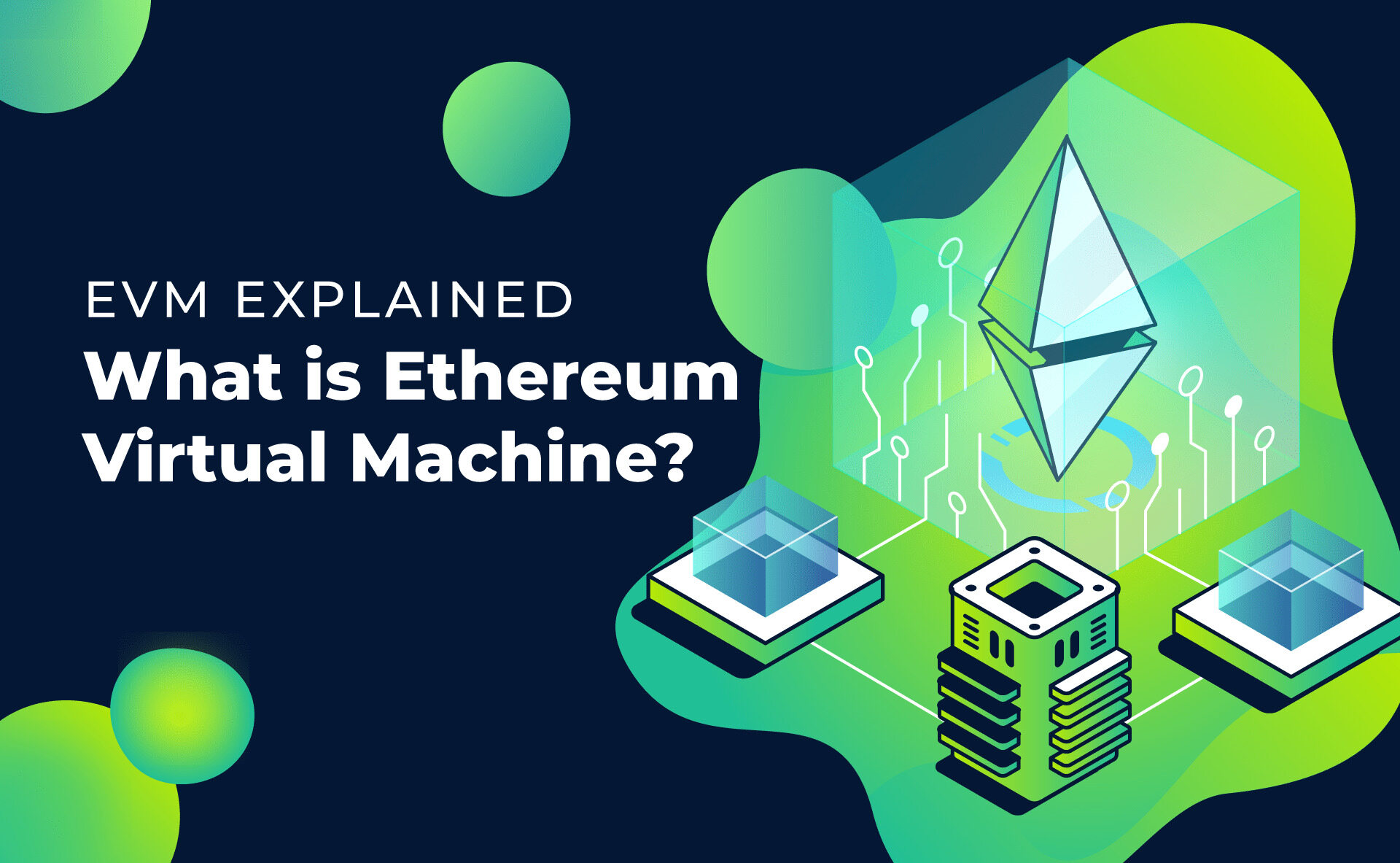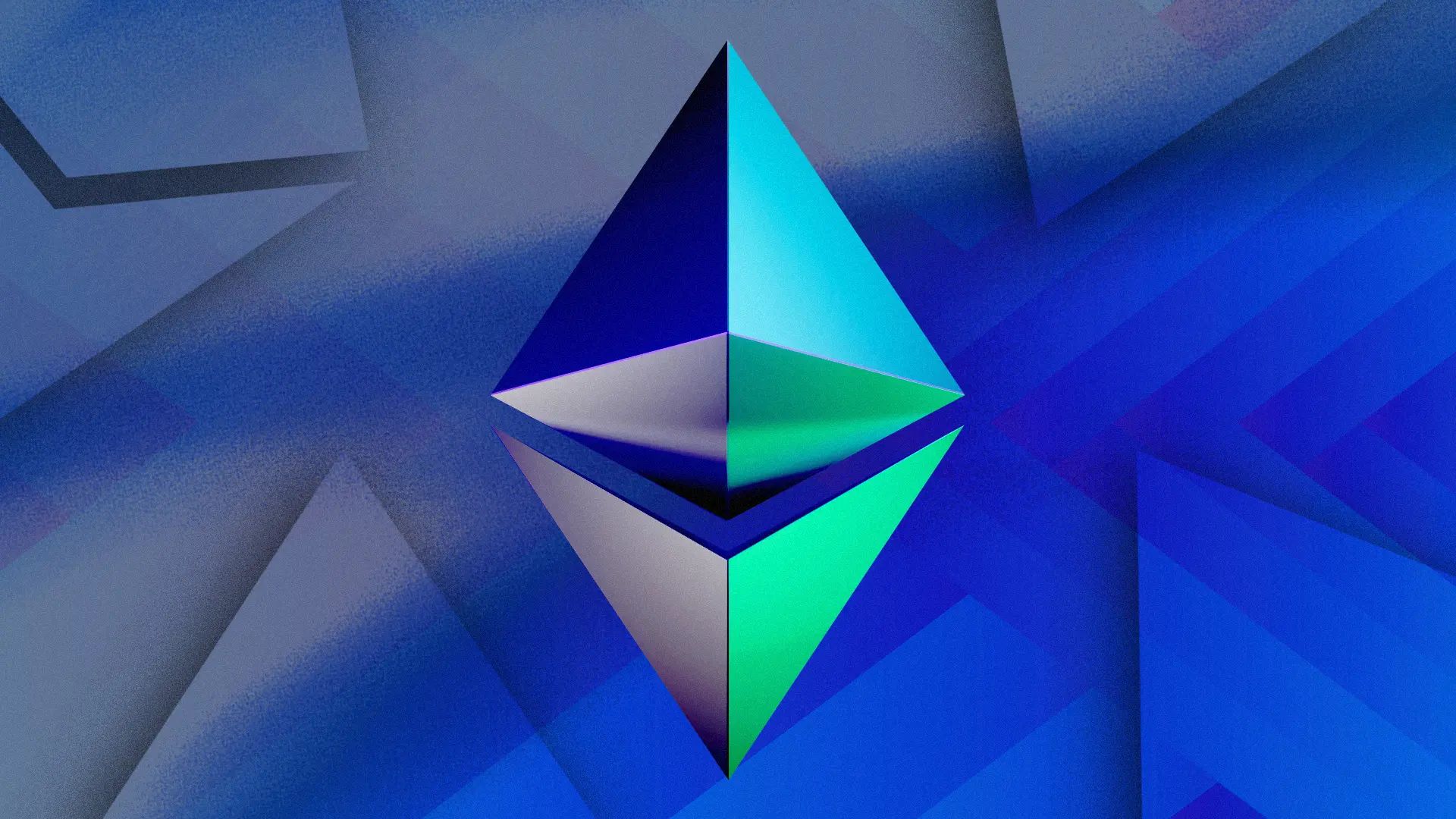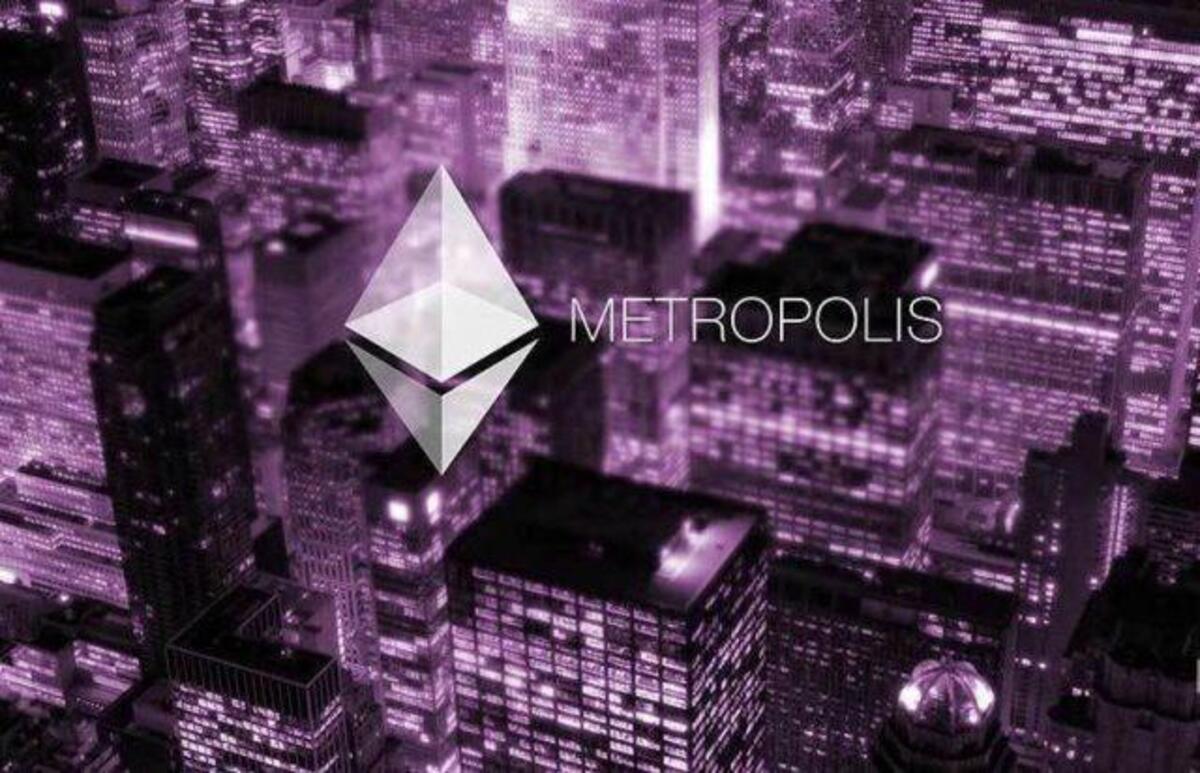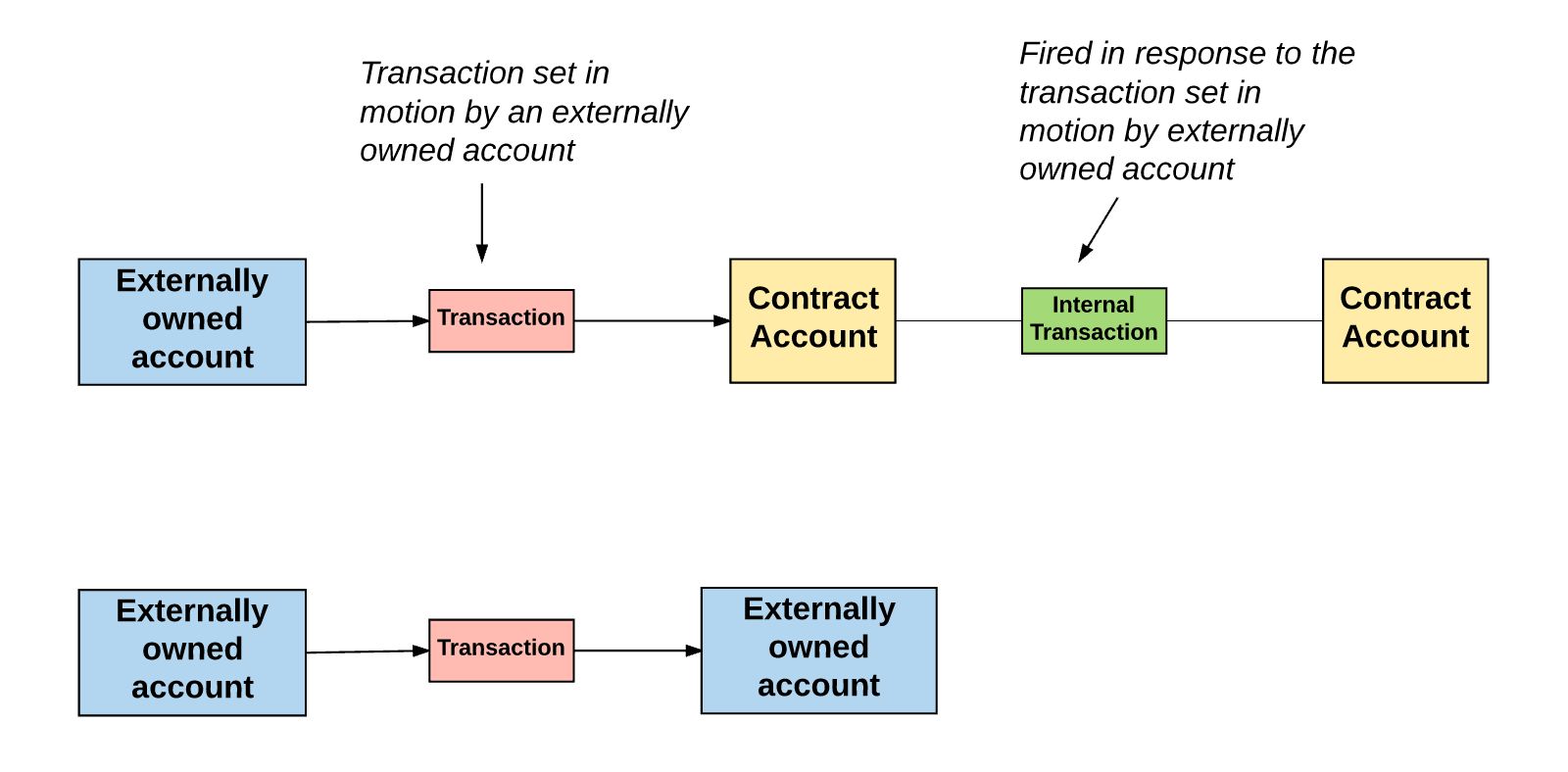Introduction
Welcome to the world of Ethereum and the Ethereum Virtual Machine (EVM). In this article, we will delve into the fundamentals of Ethereum and explore the concept of a virtual machine. We will then combine these two concepts to understand the Ethereum Virtual Machine (EVM) and its significance in the world of blockchain technology.
Ethereum is not just a digital currency like Bitcoin. It is a decentralized platform that enables the creation and execution of smart contracts. Smart contracts are self-executing agreements coded on the blockchain that automatically enforce the terms and conditions of an agreement without the need for intermediaries. Ethereum introduced the concept of a virtual machine to facilitate the execution of these smart contracts.
A virtual machine, in the context of computer science, is a software emulation of a physical computer. It allows users to run programs or applications in an isolated environment, ensuring compatibility with different operating systems and hardware configurations. The Ethereum Virtual Machine (EVM) is a specifically designed virtual machine that runs on every node in the Ethereum network.
The EVM plays a crucial role in the execution of smart contracts on the Ethereum blockchain. It serves as a sandboxed environment where the code of the smart contracts is executed and produces deterministic results. By providing a standardized and consistent execution environment, the EVM ensures that smart contracts behave predictably across all nodes in the Ethereum network.
The EVM is Turing complete, which means it can execute any program given enough time and resources. It is also stack-based, meaning that it operates on a last-in-first-out (LIFO) stack data structure. This allows for efficient and secure execution of smart contracts while preventing potential vulnerabilities such as recursion and infinite loops.
In the following sections, we will dive deeper into how the Ethereum Virtual Machine works, explore its advantages and limitations, and discuss some real-world use cases of this powerful technology. So, let’s embark on this journey to unravel the inner workings of the Ethereum Virtual Machine and discover its immense potential.
What Is Ethereum?
Ethereum is a decentralized and open-source blockchain platform that revolutionized the world of cryptocurrency and introduced the concept of smart contracts. It was proposed by Vitalik Buterin in late 2013 and was officially launched in 2015. Unlike Bitcoin, which primarily operates as a digital currency, Ethereum serves as a platform for building decentralized applications (DApps) and executing self-executing contracts known as smart contracts.
At its core, Ethereum is a network of computers or nodes that work together to maintain a shared database called the blockchain. This blockchain serves as a transparent and immutable ledger that records all transactions and smart contract executions. It enables peer-to-peer transactions, eliminates the need for intermediaries, and ensures the integrity and security of the network.
Ethereum introduced a native cryptocurrency called Ether (ETH) that serves as a fuel for the network. Ether is used to incentivize participants to perform computational tasks on the network, such as validating and confirming transactions. It is also the currency used for paying transaction fees and rewarding miners for securing the network.
One of the key features that sets Ethereum apart is its ability to support smart contracts. Smart contracts are self-executing contracts with the terms and conditions directly written into lines of code. These contracts automatically enforce the agreed-upon rules and execute as soon as the specified conditions are met. They eliminate the need for intermediaries, reduce costs, and increase transparency and efficiency in various industries such as finance, supply chain management, and decentralized applications.
Developers can build decentralized applications on top of the Ethereum platform using solidity, a programming language specifically designed for smart contracts. These decentralized applications can range from simple games and decentralized finance apps to complex applications with real-world use cases. The Ethereum platform provides a robust infrastructure and a developer-friendly environment for creating and deploying smart contracts and DApps.
Ethereum has gained significant adoption and popularity since its inception, attracting developers, entrepreneurs, and investors from around the world. It has sparked a wave of innovation and has paved the way for the development of the decentralized finance (DeFi) industry, non-fungible tokens (NFTs), and other groundbreaking applications.
In the next section, we will explore the concept of a virtual machine and understand how Ethereum combines this concept to create the Ethereum Virtual Machine (EVM).
What Is a Virtual Machine?
A virtual machine (VM), in the context of computer science, is a software emulation of a physical computer. It allows users to run programs or applications in an isolated environment, separate from the underlying hardware and operating system. This isolation ensures compatibility and portability, as programs can be run on different platforms without modification.
A virtual machine abstracts the hardware resources of a physical computer, such as the processor, memory, and storage, and provides a virtualized computing environment. It creates a virtual layer between the software and the hardware, allowing multiple operating systems or applications to run simultaneously on a single physical machine.
Virtual machines are widely used for a variety of purposes, including software development, testing, system maintenance, and server consolidation. They enable efficient resource utilization, easier software deployment, and enhanced security. Users can create, modify, and manage virtual machines using virtualization software such as VMware, VirtualBox, or Hyper-V.
Virtual machines are based on the concept of virtualization, which involves the separation of physical resources from their physical implementations. This separation enables better resource management, improved flexibility, and scalability. The virtual machine provides an environment that emulates the physical computer, allowing software to run as if it were running on a dedicated machine.
There are various types of virtual machines, including system virtual machines, process virtual machines, and language virtual machines. System virtual machines, like the Ethereum Virtual Machine (EVM), emulate an entire operating system and run multiple applications on a single physical platform. Process virtual machines, on the other hand, provide an isolated environment for running individual programs or processes. Language virtual machines, such as the Java Virtual Machine (JVM), interpret and execute programs written in a specific programming language.
Virtual machines offer several benefits, including platform independence, software isolation, enhanced security, and the ability to run multiple operating systems or applications on a single physical machine. They play a crucial role in cloud computing, as they enable the efficient allocation of resources and the provision of on-demand computing infrastructure.
In the next section, we will explore how Ethereum combines the concepts of blockchain and virtual machine to create the Ethereum Virtual Machine (EVM).
Combining Ethereum and a Virtual Machine
When Ethereum was developed, its creators recognized the need for a reliable and secure environment to execute smart contracts. They turned to the concept of a virtual machine to provide this functionality and created the Ethereum Virtual Machine (EVM).
The Ethereum Virtual Machine (EVM) is a specifically designed virtual machine that runs on every node in the Ethereum network. It serves as the runtime environment for executing smart contracts written in languages such as Solidity. The EVM ensures that the execution of smart contracts is consistent and deterministic across all nodes on the network.
By combining Ethereum and a virtual machine, the EVM provides a sandboxed and isolated environment for executing smart contracts. It protects the underlying Ethereum network from potential vulnerabilities and compromises by ensuring that the execution of smart contract code is secure and reliable.
The EVM operates on a stack-based architecture, where each operation is performed on a stack, similar to a stack of plates. This design ensures that operations are executed in a predictable and controlled manner, preventing issues such as infinite loops or stack overflows.
One of the key advantages of using a virtual machine like the EVM is that it enables the execution of Turing complete smart contracts. This means that smart contracts deployed on the Ethereum network can handle complex computational tasks and exhibit sophisticated behavior.
Another advantage of using the EVM is its ability to ensure compatibility and interoperability across different platforms. Smart contracts written for the EVM can be executed on any Ethereum node, regardless of the hardware or operating system running on the node. This portability and compatibility play a crucial role in the widespread adoption and acceptance of Ethereum as a platform for decentralized applications.
The EVM also provides a high level of security through its sandboxed execution environment. Each smart contract runs in an isolated environment within the EVM, preventing unauthorized access or manipulation of the contract’s code or state. This security feature is vital for protecting the integrity and transparency of smart contract executions on the Ethereum network.
In the following sections, we will explore in more detail how the Ethereum Virtual Machine works, including its execution model, opcode set, and other key components. We will also discuss the advantages and limitations of using the EVM in the Ethereum ecosystem.
What Is the Ethereum Virtual Machine (EVM)?
The Ethereum Virtual Machine (EVM) is a runtime environment that executes smart contracts on the Ethereum blockchain. It is a critical component of the Ethereum network and plays a crucial role in enabling the execution of decentralized applications (DApps) and the enforcement of smart contracts.
The EVM is a stack-based virtual machine that operates on the principle of executing bytecode instructions. Smart contracts written in languages like Solidity are compiled into bytecode, a low-level representation that the EVM can understand and execute. This bytecode is then deployed to the Ethereum blockchain and can be executed by all nodes in the network.
One of the distinguishing features of the EVM is its ability to execute Turing complete code. This means that any arbitrary computation can be performed on the EVM given enough time and resources. This allows for the development of complex and sophisticated smart contracts that can perform a wide range of tasks.
The EVM uses a concept called gas to allocate resources and prevent abuse on the network. Gas is a unit of computation that measures the amount of computational effort required to execute an operation or a smart contract. Each operation in the EVM consumes a certain amount of gas, and users must pay for this gas using Ether when executing their smart contracts.
The gas mechanism provides a fair and efficient way to allocate resources across the network. It prevents spamming and denial-of-service attacks by charging for computational operations. Gas costs can vary depending on the complexity and computational requirements of the smart contract, ensuring that resource consumption is proportionate to the work being done.
Another important characteristic of the EVM is its deterministic execution. This means that given the same input, the EVM will always produce the same output. Determinism is crucial for the consensus mechanism of the Ethereum network and ensures that all nodes on the network reach the same state after executing a smart contract.
The EVM also provides a set of pre-defined instructions, called opcodes, that developers can leverage to code smart contracts. These opcodes cover a wide range of functions and operations, including arithmetic calculations, conditional statements, looping, data storage, and interaction with the Ethereum blockchain. Developers can use these opcodes to write smart contracts with complex logic and functionality.
Overall, the Ethereum Virtual Machine (EVM) provides a secure, efficient, and consistent runtime environment for executing smart contracts on the Ethereum blockchain. It enables developers to create decentralized applications with powerful functionality while ensuring compatibility and interoperability across the network.
In the following sections, we will explore in detail how the Ethereum Virtual Machine operates and examine its advantages, limitations, and some real-world use cases.
How Does the Ethereum Virtual Machine Work?
The Ethereum Virtual Machine (EVM) is an integral part of the Ethereum network, responsible for executing smart contracts. Understanding how the EVM works is key to comprehending the inner workings of Ethereum and its decentralized applications.
The EVM operates on a stack-based architecture, meaning it uses a stack structure to execute instructions. Each instruction or operation in the bytecode is processed on top of the stack, following a last-in-first-out (LIFO) order. This stack-based model ensures efficient execution and enables developers to create complex smart contracts with relative ease.
Smart contracts written in high-level languages like Solidity are first compiled into low-level bytecode, which is then executed by the EVM. The EVM reads the bytecode instruction by instruction, performing calculations, storing data, and interacting with the Ethereum blockchain as needed.
One fundamental concept within the EVM is that of gas. Gas measures the computational complexity of operations and denotes the cost required to execute each instruction. Each operation in the EVM consumes a specific amount of gas, which must be paid for by users executing the smart contract.
Gas provides an incentive for efficient and optimized code, as users must pay for the computational resources they consume. If a smart contract exceeds the allocated gas limit, the execution is halted and any changes made to the blockchain are rolled back, ensuring that poorly-coded or malicious contracts cannot significantly impact the network.
Another important aspect of the EVM is its deterministic nature. Given the same input and starting state, the EVM will always produce the same output. This behavior is crucial for maintaining consensus across all nodes in the Ethereum network.
The EVM has a predefined set of instructions called opcodes. These opcodes provide the necessary functionality for interacting with the Ethereum blockchain and performing computations within the smart contract. Some common opcodes include arithmetic operations, memory operations, flow control operations, and cryptographic operations.
When a smart contract is executed, the EVM begins by initializing a memory area to store data during execution. It also creates a call stack to keep track of the executing instructions, variables, and function calls. As the EVM processes each instruction, it updates the call stack and memory accordingly.
The Ethereum network consists of multiple nodes, and each node runs its own instance of the EVM. This parallel execution enables the consensus mechanism by checking the validity of transactions and smart contracts across the network. Consensus is reached when the majority of nodes agree on the validity of the execution results.
By providing a secure, deterministic, and resource-efficient environment, the Ethereum Virtual Machine (EVM) empowers developers to create and execute robust smart contracts. It enables the seamless integration of decentralized applications within the Ethereum network while ensuring consistent results across all participating nodes.
In the following sections, we will explore the advantages and limitations of the Ethereum Virtual Machine and delve into some real-world use cases that highlight the power and versatility of this innovative technology.
Advantages of the Ethereum Virtual Machine
The Ethereum Virtual Machine (EVM) offers several advantages that contribute to its widespread adoption in the blockchain industry. These advantages stem from the EVM’s design principles and its role in executing smart contracts on the Ethereum network. Let’s explore some of the key benefits:
1. Compatibility and Portability: The EVM ensures compatibility and portability by allowing smart contracts to run on any Ethereum node, regardless of the underlying hardware or operating system. This interoperability empowers developers to create decentralized applications that can be accessed by users on various devices, enhancing the reach and accessibility of DApps.
2. Deterministic Execution: The EVM guarantees deterministic execution, producing the same output for a given input and starting state across all network nodes. This ensures consistency and enables the network’s consensus mechanism to reach agreement on transaction validity, maintaining the integrity of the blockchain.
3. Turing Completeneess: The EVM is Turing complete, meaning it can execute any computable function given enough time and resources. This opens up endless possibilities for developers to create sophisticated and complex smart contracts that can perform a wide array of computational tasks, facilitating the growth of the decentralized finance (DeFi) industry and other innovative applications.
4. Security and Isolation: The EVM provides a sandboxed execution environment for smart contracts, ensuring that each contract runs in isolation. This prevents unauthorized access or manipulation of contract code and data. The use of gas in the EVM incentivizes efficient and secure coding practices by charging for computational resources consumed, promoting the development of secure smart contracts.
5. Developer-Friendly: The EVM offers a developer-friendly environment by providing a high-level programming language like Solidity and a comprehensive set of opcodes. This facilitates smart contract development, making it easier for developers to write complex logic, handle complex data structures, and interact with the Ethereum network effectively.
6. Flexibility and Extensibility: The EVM allows for easy upgrades and improvements to the Ethereum protocol through its ability to accommodate new opcodes and instruction sets. This flexibility enables the platform to evolve with emerging technologies and requirements, providing developers with a future-proof environment to build innovative solutions.
These advantages of the Ethereum Virtual Machine contribute to its appeal as a powerful and robust runtime environment for executing smart contracts. Its compatibility, portability, determinism, security features, and developer-friendly nature make it an essential component of the Ethereum network and a catalyst for the growth and adoption of decentralized applications.
In the next section, we will explore the limitations and challenges associated with the Ethereum Virtual Machine.
Limitations of the Ethereum Virtual Machine
While the Ethereum Virtual Machine (EVM) offers numerous benefits, it also has certain limitations that are important to consider. These limitations primarily arise from the design principles and constraints of the EVM. Let’s explore some of the key limitations:
1. Scalability: One of the primary limitations of the EVM is its scalability. As the Ethereum network and the number of active smart contracts continue to grow, the EVM faces challenges in processing a large number of transactions and executing complex computations efficiently. The current design of the EVM limits its ability to handle a high transaction throughput, leading to potential bottlenecks and network congestion.
2. Gas Cost: While the gas mechanism provides a fair and efficient way to allocate computational resources, it can also present a limitation. The gas cost associated with executing smart contracts can be high, especially for complex and resource-intensive computations. This can pose challenges for developers who need to carefully optimize their code to minimize gas consumption and keep transaction costs reasonable for users.
3. Lack of Privacy: The EVM operates on a transparent and public blockchain, which means that all smart contract code and execution details are visible to anyone on the network. This lack of privacy can be a limitation for certain use cases that require confidentiality or sensitive data handling. While efforts are being made to introduce privacy solutions within the Ethereum ecosystem, it remains an area of ongoing development.
4. Storage Costs: The EVM uses a decentralized storage system called the Ethereum State Trie to store smart contract data. While this distributed storage provides transparency and resilience, it also incurs storage costs for developers. Storing large amounts of data on the Ethereum blockchain can be expensive, especially if it requires frequent read and write operations.
5. Upgradeability Challenges: The design of the EVM poses challenges regarding the upgradeability of smart contracts. Once a smart contract is deployed, it is typically immutable and cannot be modified. While upgradeability mechanisms have been proposed, implementing them introduces complexities and potential security risks, making smart contract upgrades a challenging task.
It is important to note that the Ethereum community and developers are actively working on solutions to address these limitations. Efforts are being made to improve scalability through solutions like sharding and layer 2 protocols. Privacy solutions, such as zero-knowledge proofs and secure multiparty computation, are also being explored.
In summary, while the Ethereum Virtual Machine has its limitations, the Ethereum ecosystem is continuously evolving and striving to overcome these challenges. By acknowledging these limitations and driving innovation and research, the Ethereum community aims to create a more scalable, efficient, and robust platform for decentralized applications.
Use Cases of the Ethereum Virtual Machine
The Ethereum Virtual Machine (EVM) has unlocked a world of possibilities for decentralized applications and smart contracts. Its versatility and functionality have paved the way for numerous real-world use cases across various industries. Let’s explore some of the notable applications of the EVM:
1. Decentralized Finance (DeFi): DeFi has emerged as one of the most prominent use cases of the EVM. DeFi platforms leverage smart contracts to offer financial services such as lending, borrowing, decentralized exchanges, and yield farming. The EVM facilitates the creation of complex financial instruments and protocols, enabling individuals to participate in a trustless and permissionless financial ecosystem.
2. Non-Fungible Tokens (NFTs): NFTs have gained significant popularity, allowing for the creation and ownership of unique digital assets like artwork, collectibles, and virtual real estate. The EVM provides the infrastructure to mint, trade, and verify the authenticity of NFTs, revolutionizing the art and entertainment industries and enabling new revenue streams for creators.
3. Supply Chain Management: The EVM enables transparent and immutable tracking of products and goods throughout the supply chain. By utilizing smart contracts, stakeholders can record and verify every step of the supply chain, enhancing transparency, reducing fraud, and improving logistics and inventory management.
4. Voting and Governance: The EVM facilitates secure and tamper-resistant voting and governance systems. Smart contracts can be utilized to create decentralized voting protocols, ensuring fair and transparent decision-making processes without the need for intermediaries. This can be applied to governance in organizations, community-based initiatives, and even national elections.
5. Gaming and Virtual Worlds: The EVM provides the foundation for building decentralized gaming platforms and virtual worlds. By utilizing smart contracts, game developers can create games with built-in economies, digital asset ownership, and provably fair gameplay. Users can secure their virtual assets on the blockchain and trade them in a secure and trustless manner.
6. Identity and Authentication: The EVM can be leveraged to create secure and decentralized systems for identity management and authentication. By storing and verifying identity information on the blockchain, individuals can maintain control over their personal data, reduce the risk of identity theft, and simplify the authentication process for various services and applications.
These are just a few examples of how the Ethereum Virtual Machine is being utilized across different industries and sectors. The flexibility, security, and programmability of the EVM enable developers to build innovative and transformative applications that democratize access, foster trust, and disrupt traditional centralized systems.
As the Ethereum ecosystem continues to grow and evolve, we can expect to see even more imaginative and impactful use cases emerge, further showcasing the potential of the Ethereum Virtual Machine as a powerful engine for decentralized innovation.
Conclusion
The Ethereum Virtual Machine (EVM) stands as a groundbreaking technology that has revolutionized the world of blockchain and decentralized applications. Its unique combination of a virtual machine and blockchain infrastructure has unlocked endless possibilities for developers, entrepreneurs, and individuals across various industries.
Ethereum, with its native cryptocurrency Ether (ETH), provides the platform and network for the execution of smart contracts on the EVM. Smart contracts running on the EVM offer the ability to create self-executing agreements, automating and streamlining transactions in a trustless and transparent manner.
The EVM’s compatibility, portability, and deterministic execution make it a powerful tool for software developers worldwide. Its support for Turing complete code and the use of gas ensure the execution of complex computational tasks while incentivizing efficiency and security.
The advantages of the EVM include its ability to run on any Ethereum node, its secure and isolated execution environment, and its developer-friendly features. These benefits have led to the development of a wide range of applications such as decentralized finance (DeFi), non-fungible tokens (NFTs), supply chain management, voting and governance systems, gaming, and identity management.
However, the EVM also has limitations, including scalability challenges, gas costs, and privacy concerns. These limitations are being addressed by the Ethereum community through ongoing research and development efforts, as well as the implementation of upgrades and scalability solutions.
As the Ethereum ecosystem continues to grow and evolve, driven by the continuous improvements to the EVM and the adoption of innovative solutions, we can anticipate the emergence of new use cases and the transformation of industries. The Ethereum Virtual Machine has empowered individuals, disrupted traditional systems, and brought us closer to a decentralized and equitable future.
In conclusion, the Ethereum Virtual Machine serves as a critical component of the Ethereum network, enabling the execution of smart contracts and the development of decentralized applications. Its unique features, adaptability, and potential for innovation make it a cornerstone of the blockchain revolution.

























